Experimental Study on the Effect of Temperature on the Characteristics of Cutterhead Mud Cake in Complex Red-Bed Geology
Abstract
:1. Introduction
2. Engineering Background
3. Materials and Methods
3.1. Experimental Materias
3.2. Experimental Methods
- Preparation of the soil samples for the experiment. After removing impurities from the mud cake, the dried soil samples are rehydrated to their natural water content to prepare the experimental soil samples.
- Development of the adhesion device and mud cake shedding experiments. First, a device is developed to prepare mud cake samples that simulate actual conditions. This device applies pressure to the mud cake, mimicking the pressure on the cutter head face, while also using motor rotation to simulate the turning of the cutter head, creating mud cakes that closely resemble real conditions. Subsequently, the cutter head with an adhered mud cake is placed in an oven to bake, simulating the adhesion characteristics of the cutter head and mud cake at different temperatures and durations.
- The mud cake hardness test involves using a pressure gauge with a conical head to perform a compressive penetration destruction test on the mud cake adhering to the cutter head. The compressive penetration load is used to characterize the hardness of the mud cake, obtaining hardness values under various temperatures and durations.
3.2.1. Preparation of Laboratory Soil Samples
3.2.2. Mud Cake Adhesion Preparation Device
3.2.3. Mud Cake Shedding Test
3.2.4. Mud Cake Hardness Test
3.2.5. Test Samples
4. Results
4.1. The Impact of Temperature and Time on Mud Cake Shedding
4.1.1. The Impact of Temperature on Mud Cake Shedding Amount and Rate
4.1.2. The Impact of Time on Mud Cake Shedding Amount and Rate
4.2. The Impact of Water Content on Mud Cake Shedding
4.3. The Results of Mud Cake Hardness Tests
5. Discussion
5.1. Water Film Theory
5.2. Adhesion Mechanism at Different Water Contents
6. Conclusions
Author Contributions
Funding
Institutional Review Board Statement
Informed Consent Statement
Data Availability Statement
Conflicts of Interest
References
- Zhou, C.; Ding, L.; Skibniewski, M.J.; Luo, H.; Zhang, H. Data based complex network modeling and analysis of shield tunneling performance in metro construction. Adv. Eng. Inform. 2018, 38, 168–186. [Google Scholar]
- Avunduk, E.; Copur, H. Effect of clogging on EPB TBM performance: A case study in Akfirat waste water tunnel, Turkey. Geotech. Geol. Eng. 2019, 37, 4789–4801. [Google Scholar]
- Zumsteg, R.; Puzrin, A.M.; Anagnostou, G. Effects of slurry on stickiness of excavated clays and clogging of equipment in fluid supported excavations. Tunn. Undergr. Space Technol. 2016, 58, 197–208. [Google Scholar]
- Thewes, M.; Burger, W. Clogging of TBM drives in clay–identification and mitigation of risks. In Underground Space Use. Analysis of the Past and Lessons for the Future, Two Volume Set; CRC Press: Boca Raton, FL, USA, 2005. [Google Scholar]
- Ding, X.; Xie, A.Y.; Yang, H.; Li, S. Quantifying Multifactor Effects on Mud Cake Formation Risk for a Tunnel Boring Machine with the Analytical Hierarchy Process. Buildings 2023, 13, 355. [Google Scholar] [CrossRef]
- Basmenj, A.K.; Ghafoori, M.; Cheshomi, A.; Azandariani, Y.K. Adhesion of clay to metal surface; Normal and tangential measurement. Geomech. Eng. 2016, 10, 125–135. [Google Scholar]
- Khabbazi Basmenj, A.; Mirjavan, A.; Ghafoori, M.; Cheshomi, A. Assessment of the adhesion potential of kaolinite and montmorillonite using a pull-out test device. Bull. Eng. Geol. Environ. 2017, 76, 1507–1519. [Google Scholar]
- Khabbazi, A.; Ghafoori, M.; Tarigh Azali, S.; Cheshomi, A. Experimental and laboratory assessment of clogging potential based on adhesion. Bull. Eng. Geol. Environ. 2019, 78, 605–616. [Google Scholar]
- Dash, B.; Murthy, V.; Chattopadhyaya, S. Design Aspects Governing Disc Cutters and Cutterheads of Hard Rock TBM—A Review. Min. Metall. Explor. 2024, 41, 219–237. [Google Scholar]
- Farrokh, E. Layout design specifications of hard-rock TBM cutterheads at maximum cutter penetration and TBM advance. Arab. J. Geosci. 2021, 14, 2049. [Google Scholar]
- Ji, F.; Liu, P.; Yang, Z.; Wen, B.; Hu, Q. Experimental study and mechanism analysis of high-pressure water jet for mud cake cutting during shield tunneling. Front. Earth Sci. 2024, 12, 1371212. [Google Scholar]
- Djeran-Maigre, I.; Dubujet, P.; Vogel, T.M. Variation over time of excavated soil properties treated with surfactants. Environ. Earth Sci. 2018, 77, 67. [Google Scholar]
- Zumsteg, R.; Plötze, M.; Puzrin, A.M. Effect of soil conditioners on the pressure and rate-dependent shear strength of different clays. J. Geotech. Geoenvironmental Eng. 2012, 138, 1138–1146. [Google Scholar]
- Liu, P.; Yang, Z.; Ji, F.; Chen, P.; Hu, Q.; He, X. Study on Mudcake disintegration in clayey strata during shield tunneling: Effects of dispersants and bentonite slurry. Heliyon 2024, 10, e30663. [Google Scholar]
- Yan, J.; Xue, X.; Gong, C.; Zhang, K. Study on the Characteristics and Mechanism of Shield Tunnel Mud Cake Disintegration in Complex Red-Bed Geology. Coatings 2024, 14, 567. [Google Scholar] [CrossRef]
- Kalayci Sahinoglu, U.; Ozer, U. The prediction of cutter wear from temperature measurements on TBM discs and cutting face. Arab. J. Geosci. 2020, 13, 207. [Google Scholar]
- Farrokh, E.; Kim, D.Y. A discussion on hard rock TBM cutter wear and cutterhead intervention interval length evaluation. Tunn. Undergr. Space Technol. 2018, 81, 336–357. [Google Scholar]
- Jin, D.; Zhang, Z.; Yuan, D. Effect of dynamic cutterhead on face stability in EPB shield tunneling. Tunn. Undergr. Space Technol. 2021, 110, 103827. [Google Scholar]
- Qiu, T.; Zhang, Y. Experimental research on the impact of interface temperature on the adhesion properties of clay under the condition of different contacting time. Geofluids 2021, 2021, 4138102. [Google Scholar]
- Ying, K.; Pan, X.; Lian, M.; Zou, F.; Xu, G.; Zhou, K.; Fang, Y. Effect of Soil-Cutterhead Interface Temperature on the Consolidation and Hardening of Mud Cake under Multi-factor Conditions. Arab. J. Sci. Eng. 2023, 48, 12931–12943. [Google Scholar]
- Fu, J.; Xia, Y.; Lan, H.; Wu, D.; Lin, L. A case study on TBM cutterhead temperature monitoring and mud cake formation discrimination method. Sci. Rep. 2021, 11, 19983. [Google Scholar]
- Yang, Y.; Li, X.; Jin, D.; Su, W.; Mao, J. Transient temperature field model for a cutterhead during slurry shield tunneling. Tunn. Undergr. Space Technol. 2021, 117, 104128. [Google Scholar]
- Abuel-Naga, H.; Bergado, D.; Ramana, G.; Grino, L.; Rujivipat, P.; Thet, Y. Experimental evaluation of engineering behavior of soft Bangkok clay under elevated temperature. J. Geotech. Geoenviron. Eng. 2006, 132, 902–910. [Google Scholar]
- Zhou, M.; Li, J.; Luo, Z.; Sun, J.; Xu, F.; Jiang, Q.; Deng, H. Impact of water–rock interaction on the pore structures of red-bed soft rock. Sci. Rep. 2021, 11, 7398. [Google Scholar]
- Huang, K.; Kang, B.; Zha, F.; Li, Y.; Zhang, Q.; Chu, C. Disintegration characteristics and mechanism of red-bed argillaceous siltstone under drying–wetting cycle. Environ. Earth Sci. 2022, 81, 336. [Google Scholar]
- Slanska, J. A red-bed formation in the South Bohemian Basins, Czechoslovakia. Sediment. Geol. 1976, 15, 135–164. [Google Scholar]
- Xie, X.; Chen, H.; Xiao, X.; Wang, J.; Zhou, J. Micro-structural characteristics and softening mechanism of red-bed soft rock under water-rock interaction condition. J. Eng. Geol. 2019, 27, 966–972. [Google Scholar]
- Zhou, H.; Zheng, D.; Liu, J.; Yin, R. Fractal Characterization of the Microstructure of Red-Bed Soft Rocks and Kinetic Modeling of Interfacial Evolution. Appl. Sci. 2024, 14, 4458. [Google Scholar] [CrossRef]
- Piskulich, Z.A.; Mesele, O.O.; Thompson, W.H. Activation energies and beyond. J. Phys. Chem. A 2019, 123, 7185–7194. [Google Scholar]
- Burbaum, U.; Sass, I. Physics of adhesion of soils to solid surfaces. Bull. Eng. Geol. Environ. 2017, 76, 1097–1105. [Google Scholar]
- Fang, Y.; Zhuo, B.; Zhang, R.; Wang, Y.; Dou, L.; Yao, Y. Soil conditioning of clay based on interface adhesion mechanism: Microscopic simulation and laboratory experiment. Undergr. Space 2024, 18, 239–255. [Google Scholar]
- Ewing, G.E. Ambient thin film water on insulator surfaces. Chem. Rev. 2006, 106, 1511–1526. [Google Scholar] [PubMed]
- Cui, J.; Xu, G.; Fang, Y.; Chen, Z.; Yao, Z.; Tao, L.; Qu, L. Experimental assessment of Soil/metal interface adhesion behaviours of EPB shield Machines. Tunn. Undergr. Space Technol. 2023, 131, 104835. [Google Scholar]
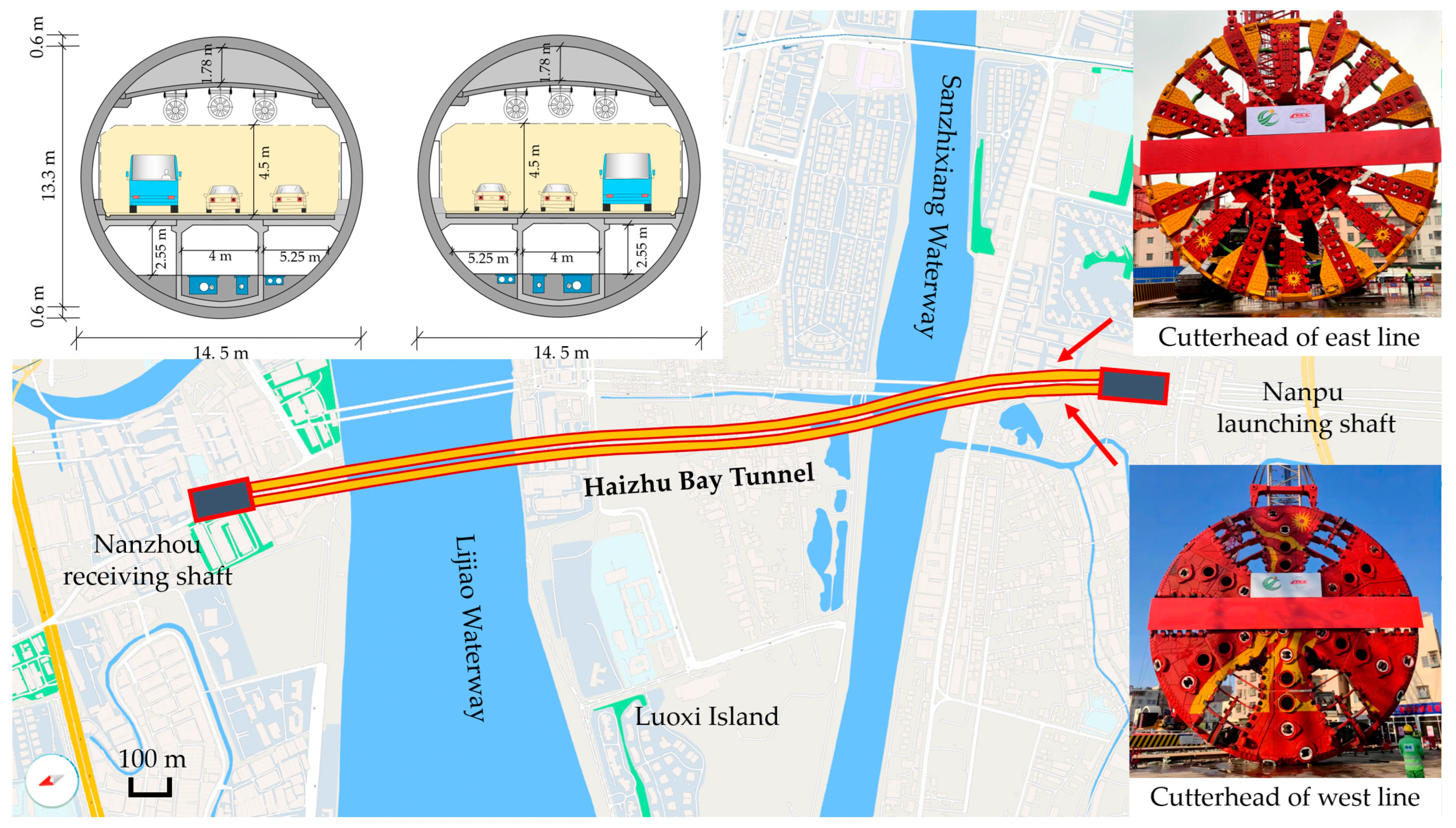
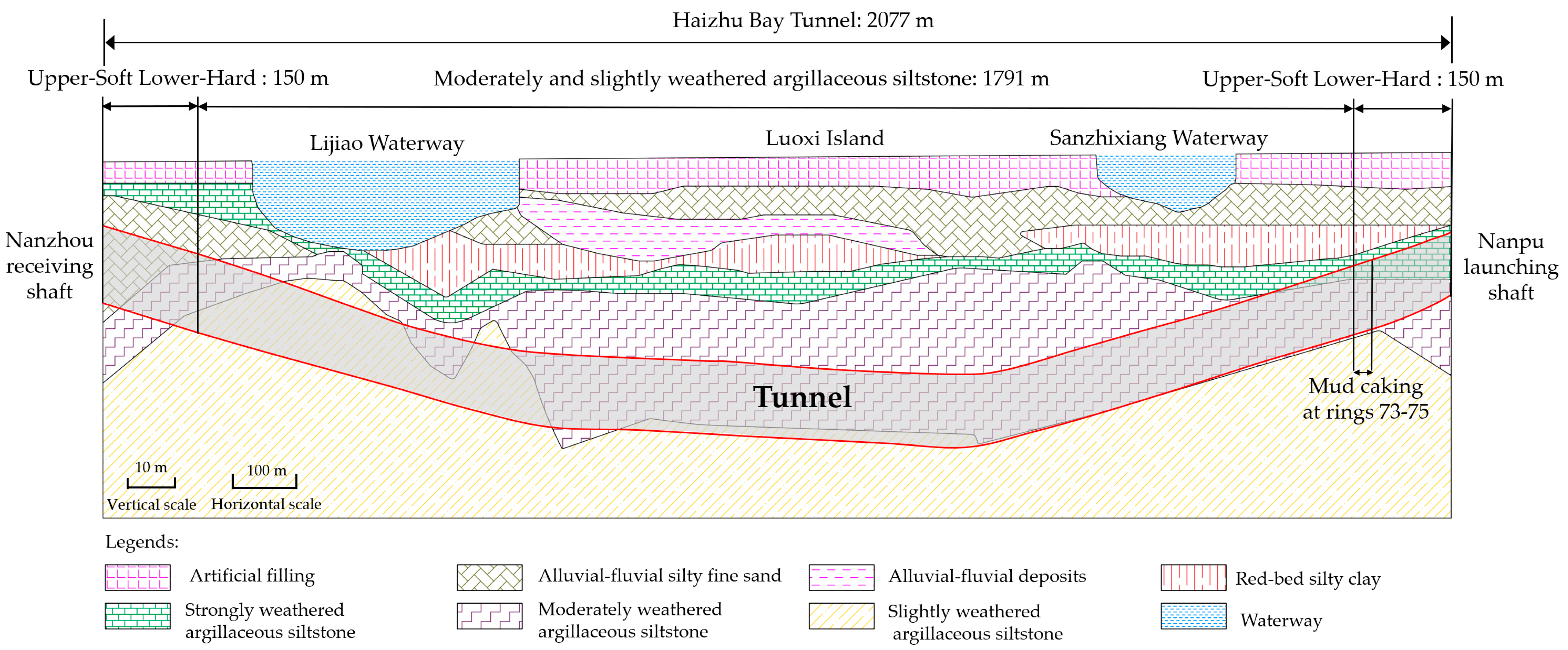
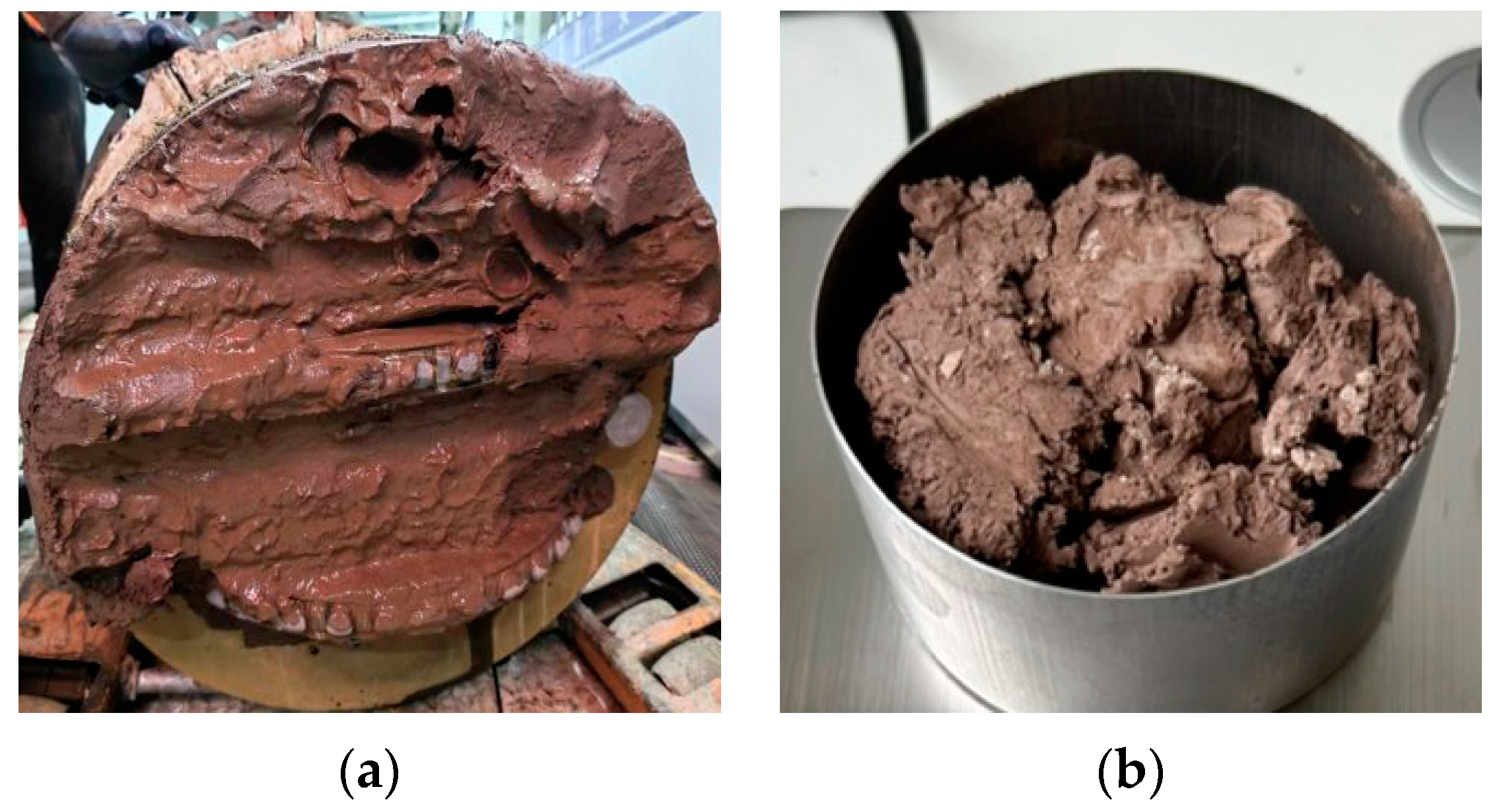

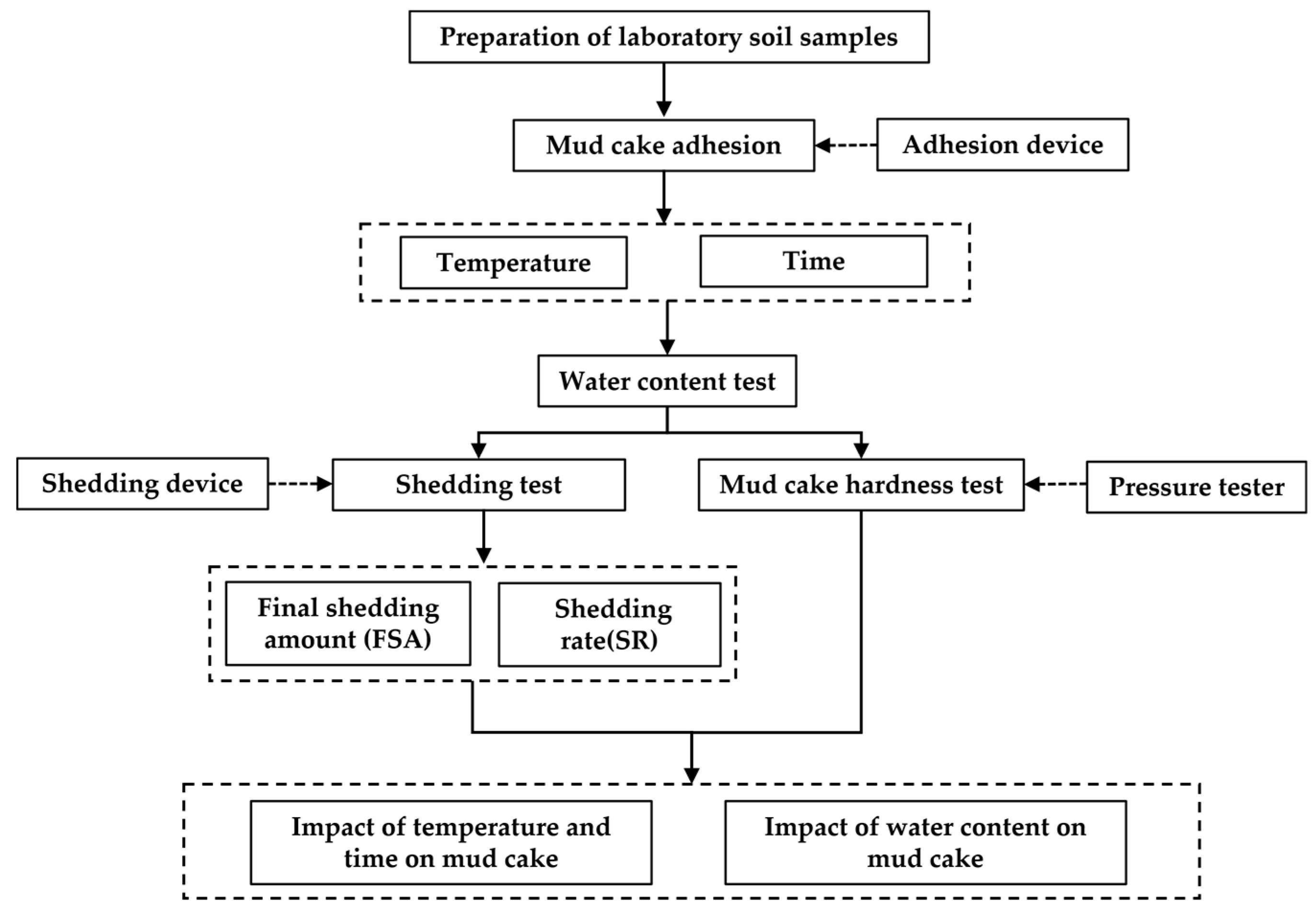
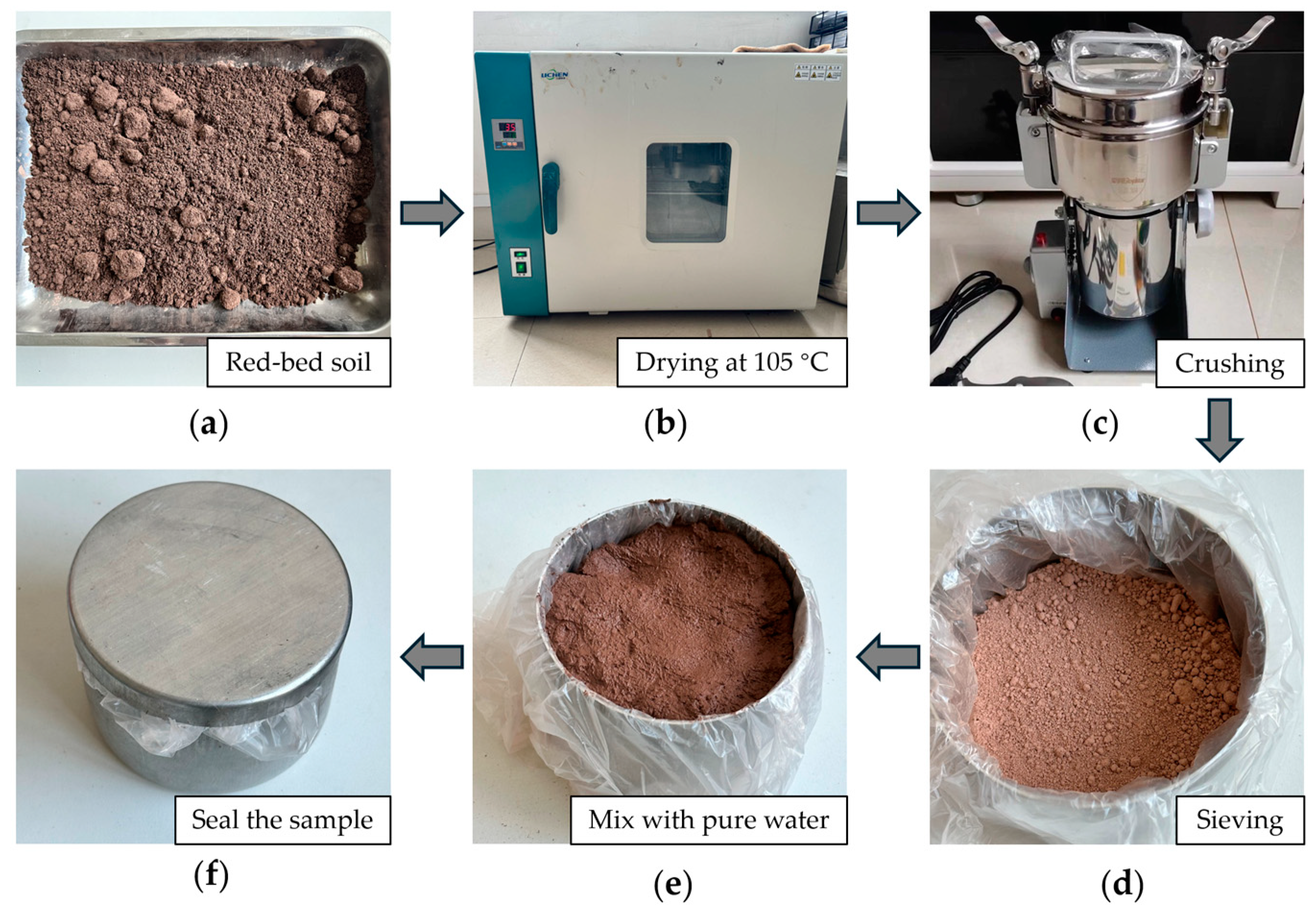
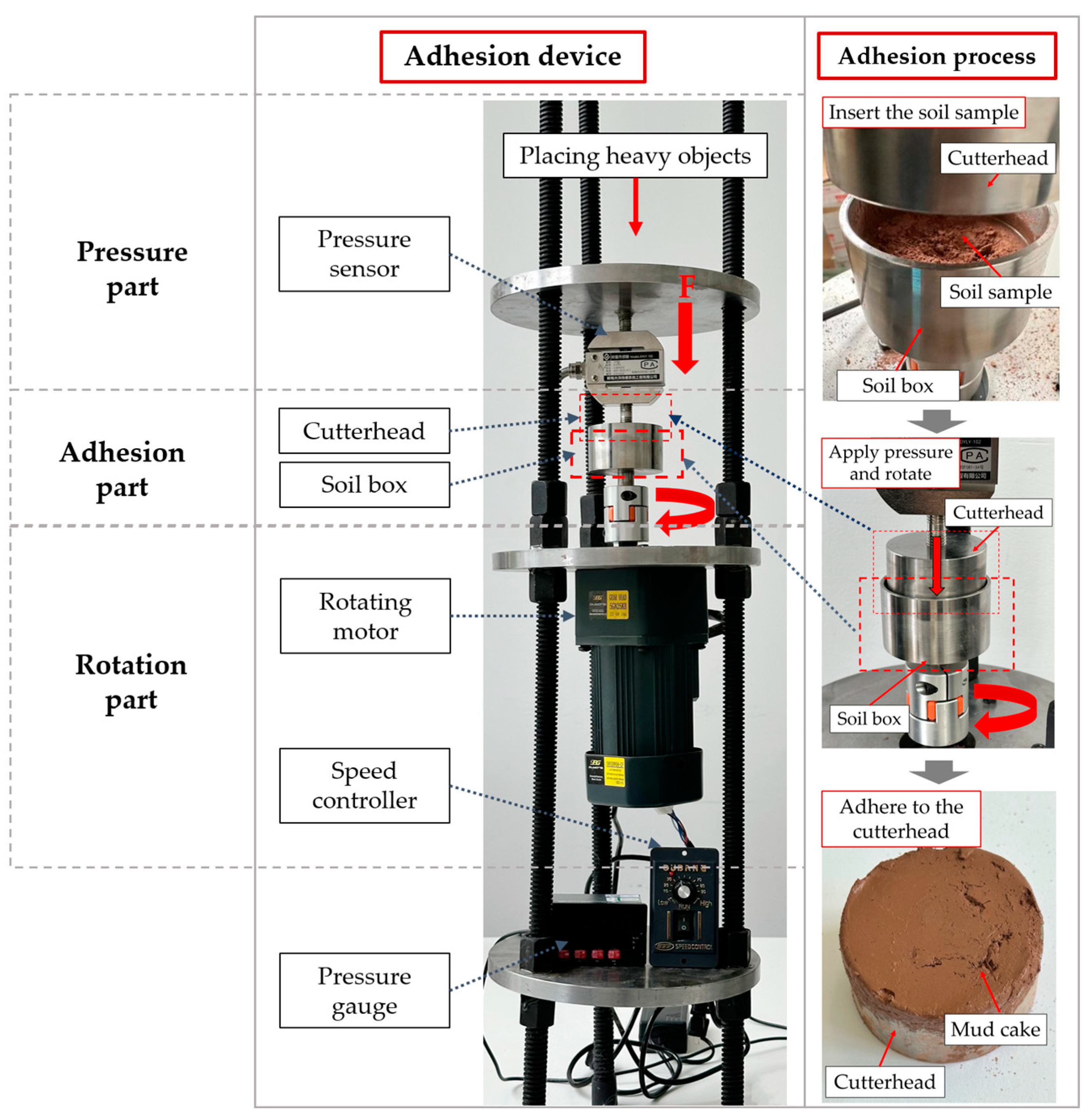
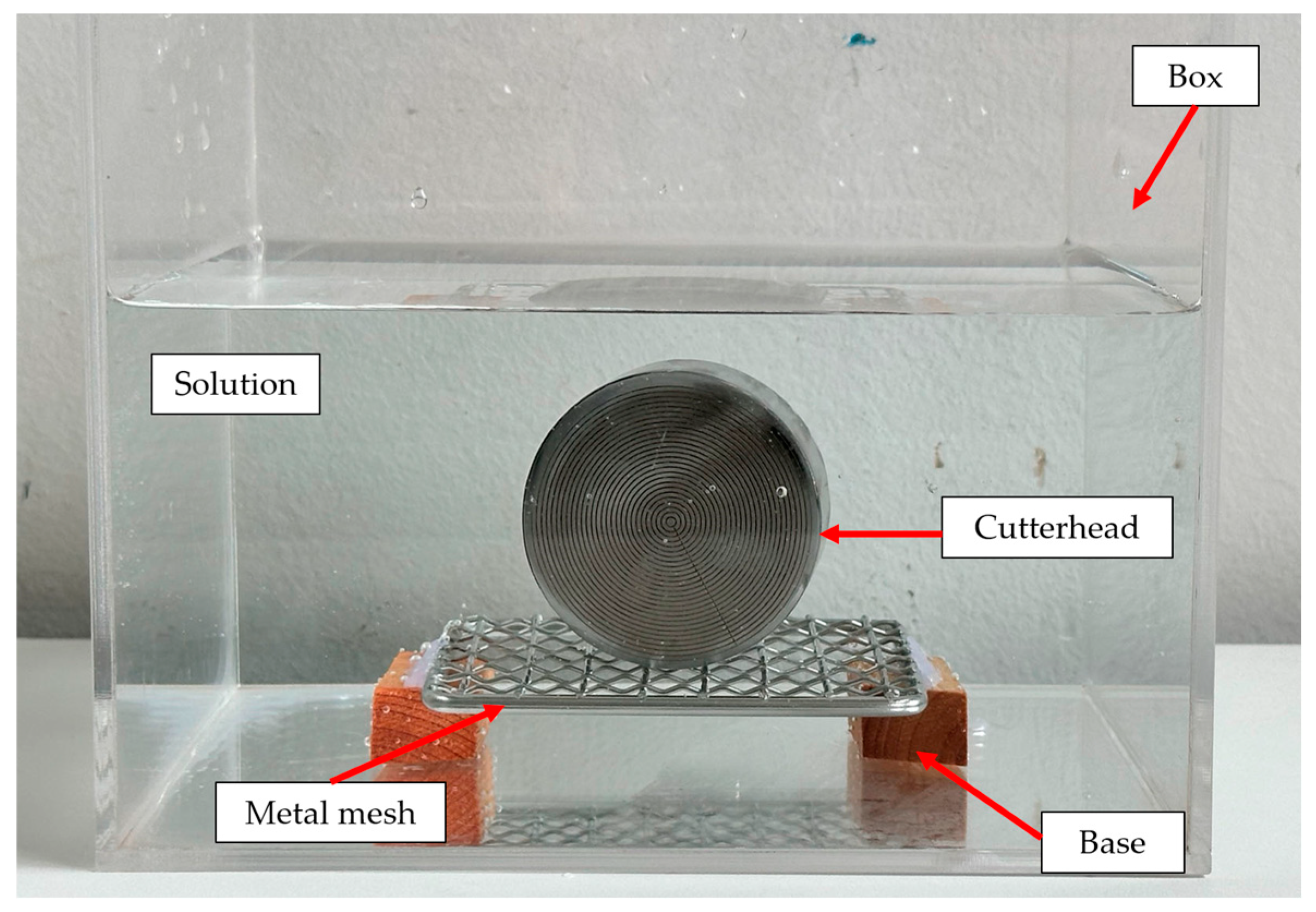
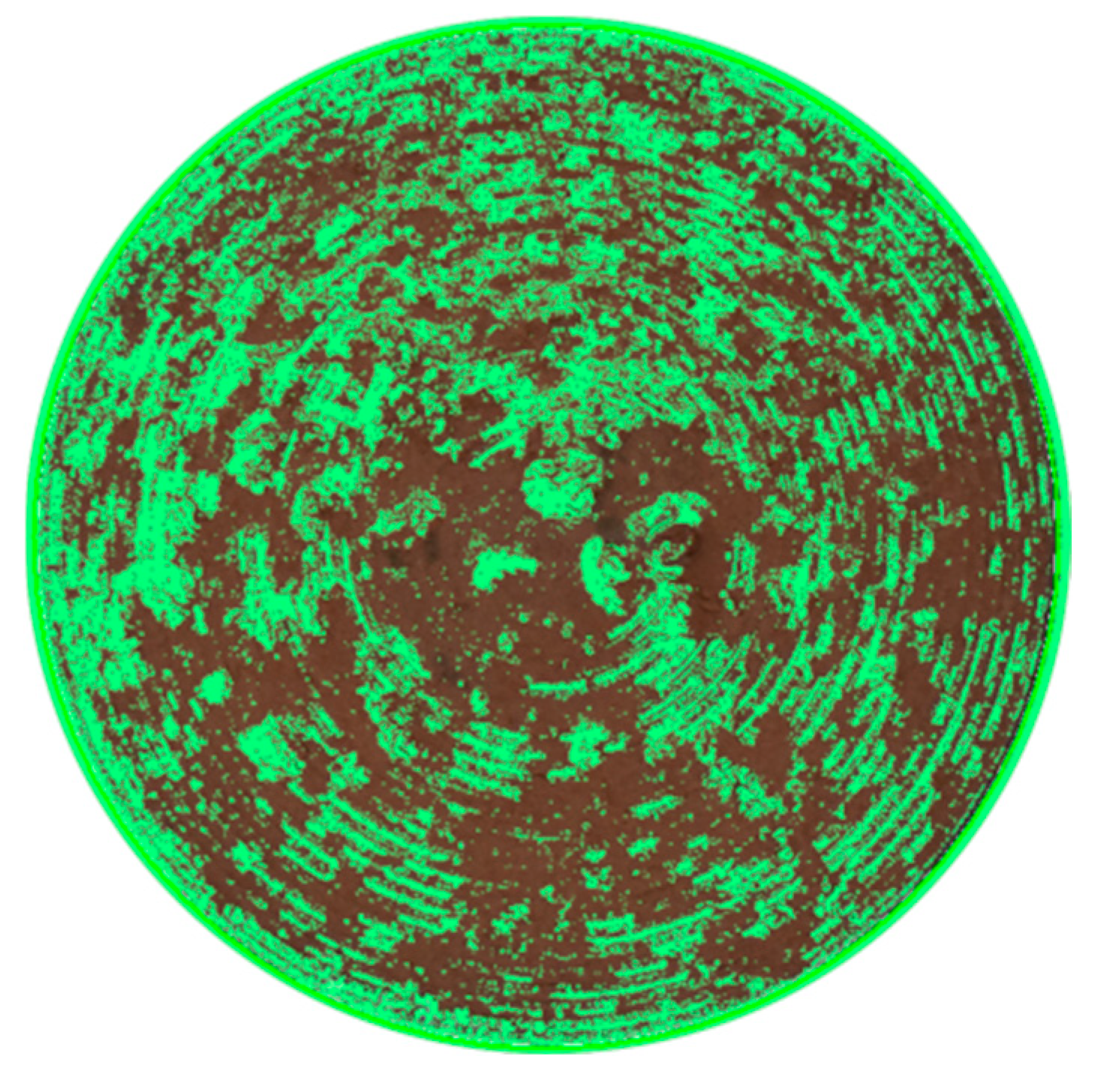


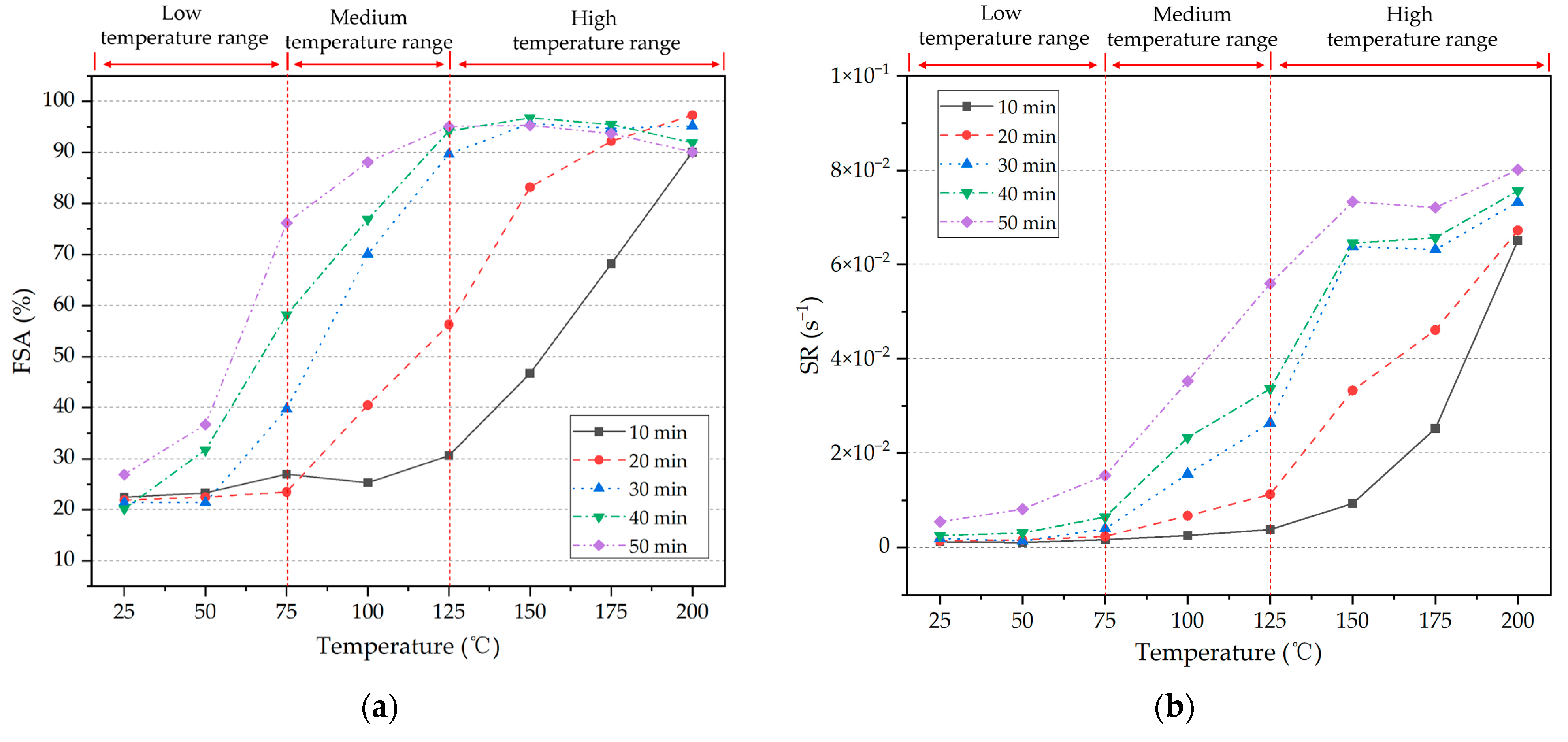
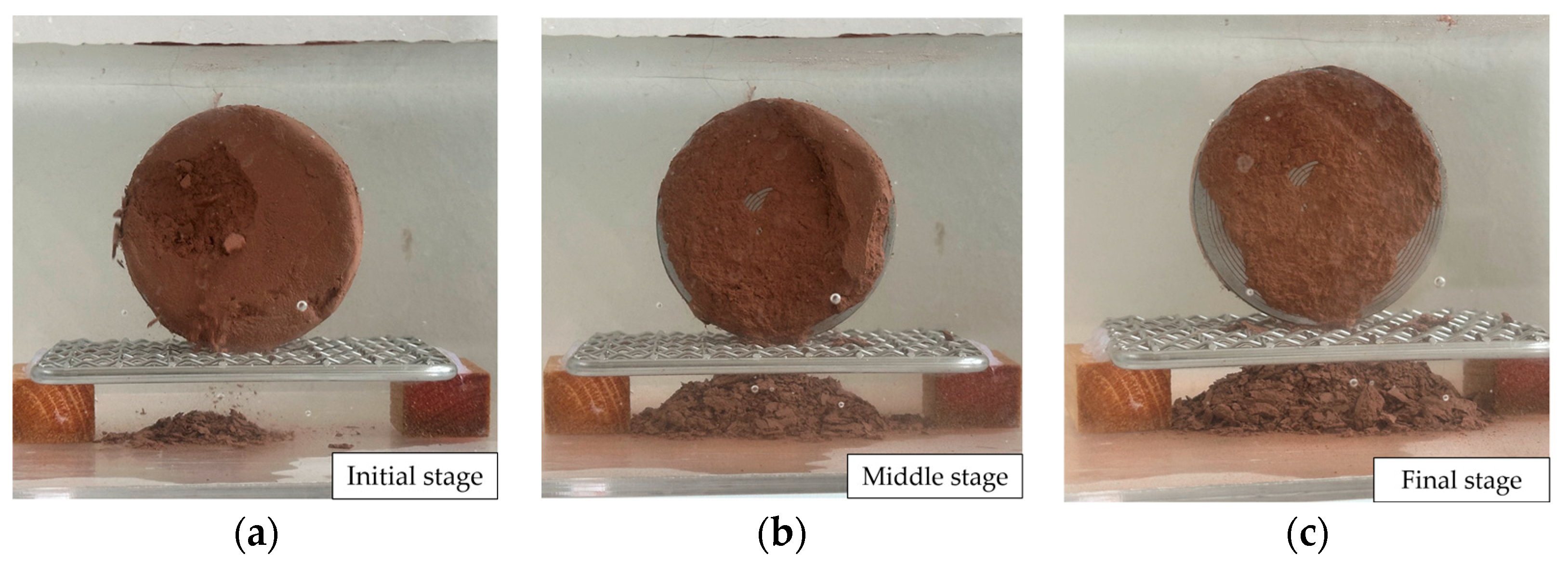
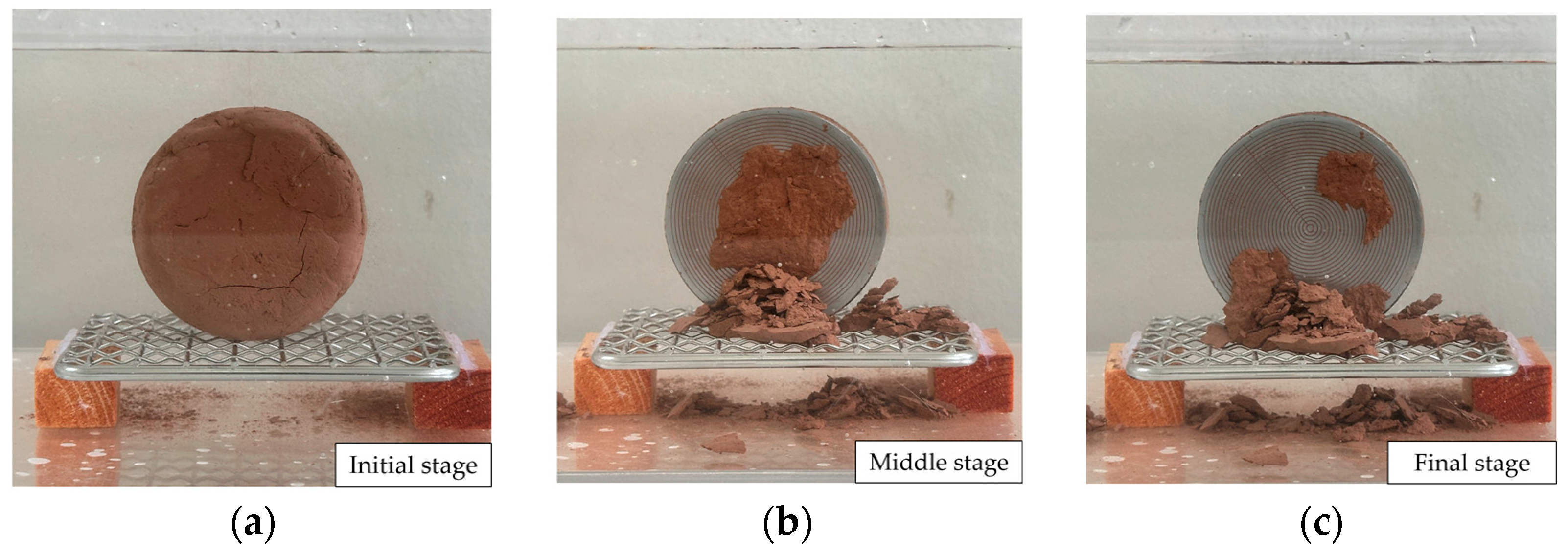

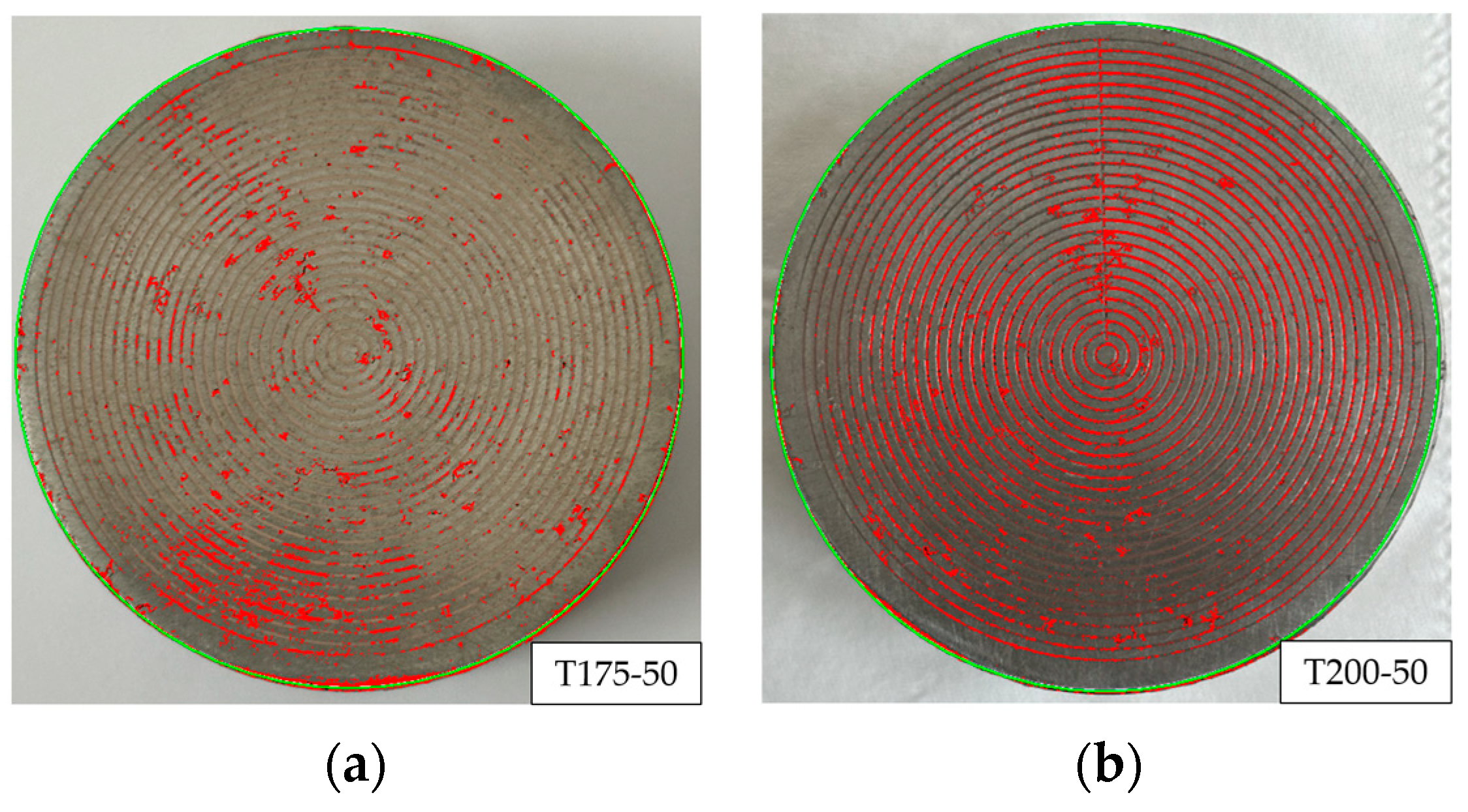

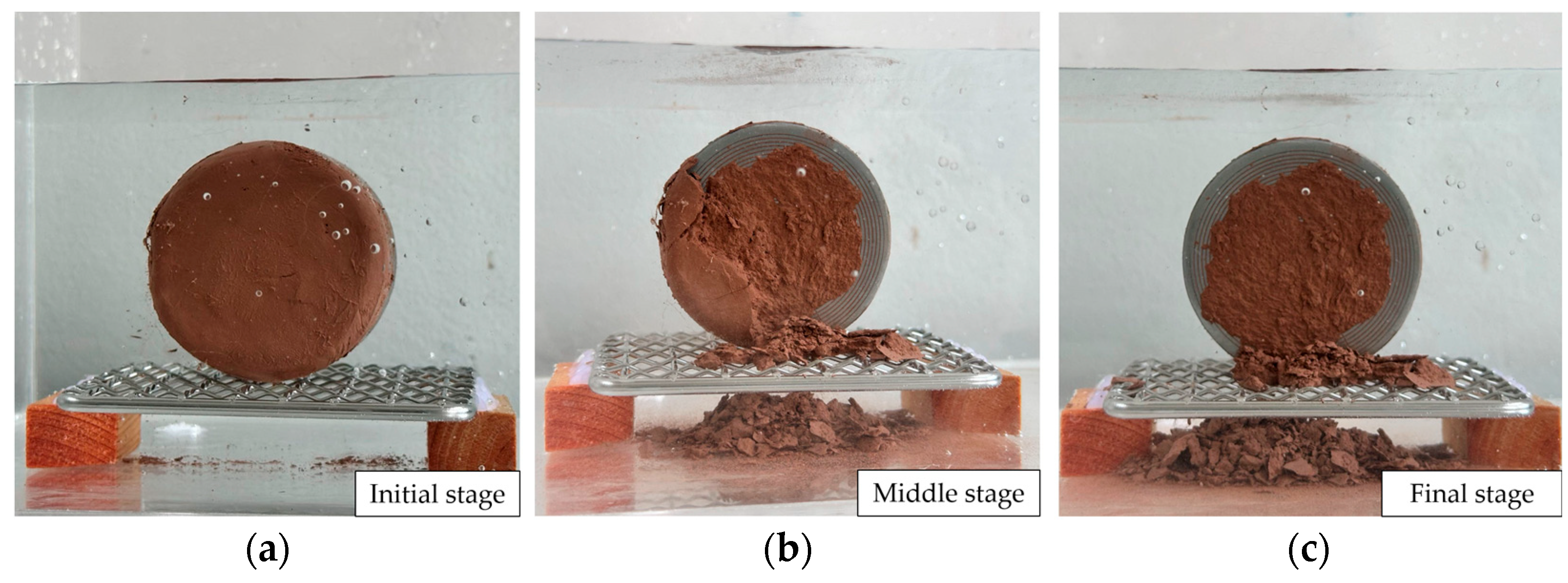


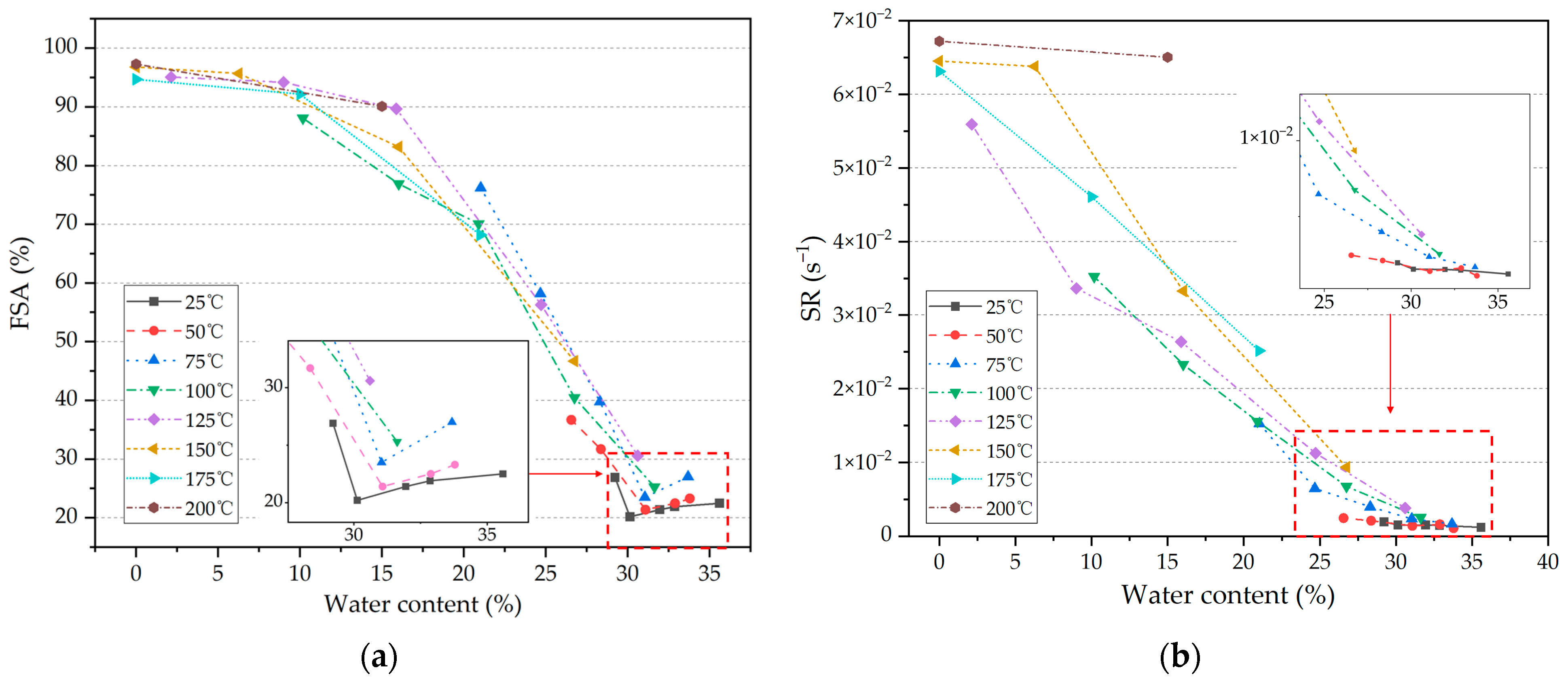

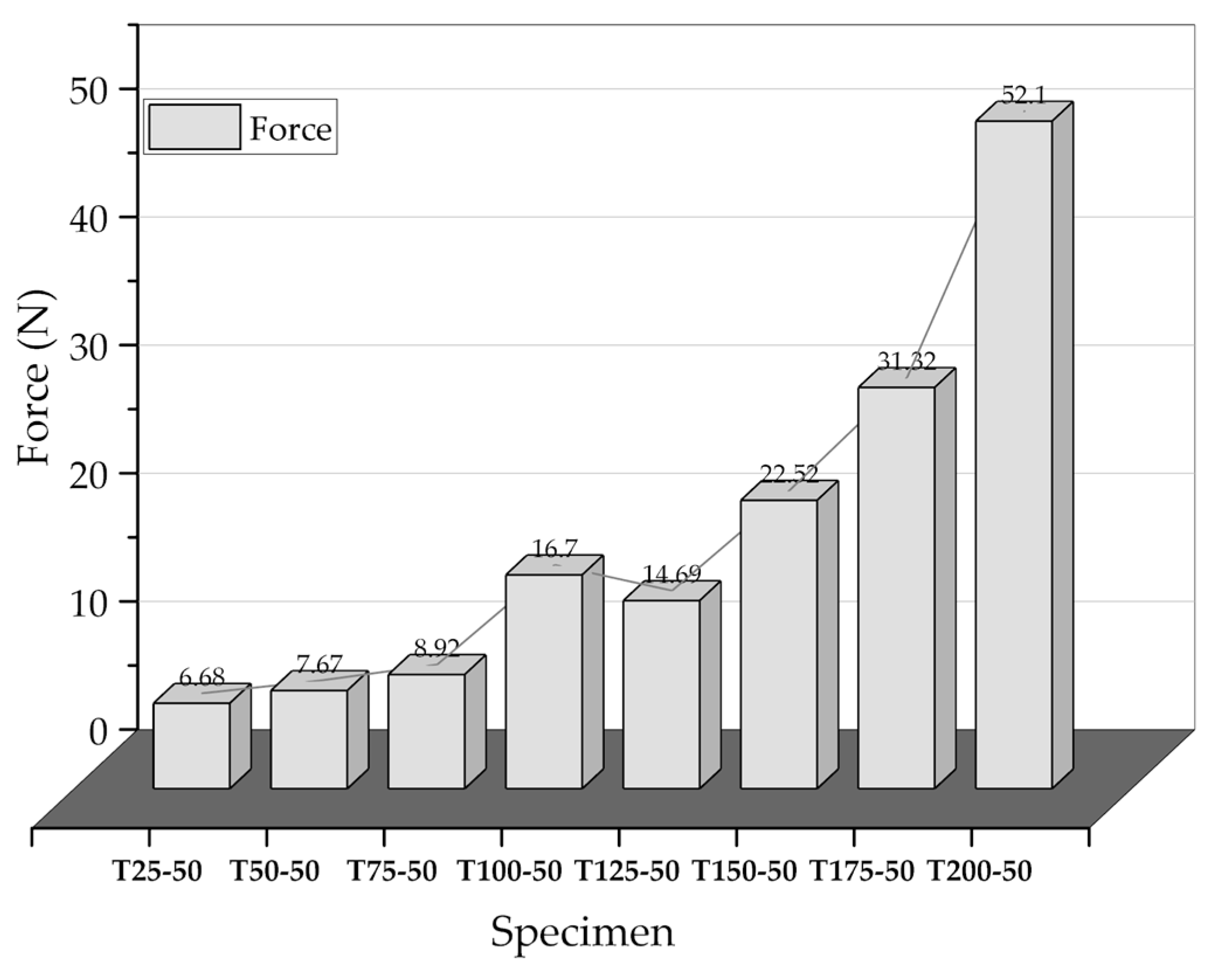

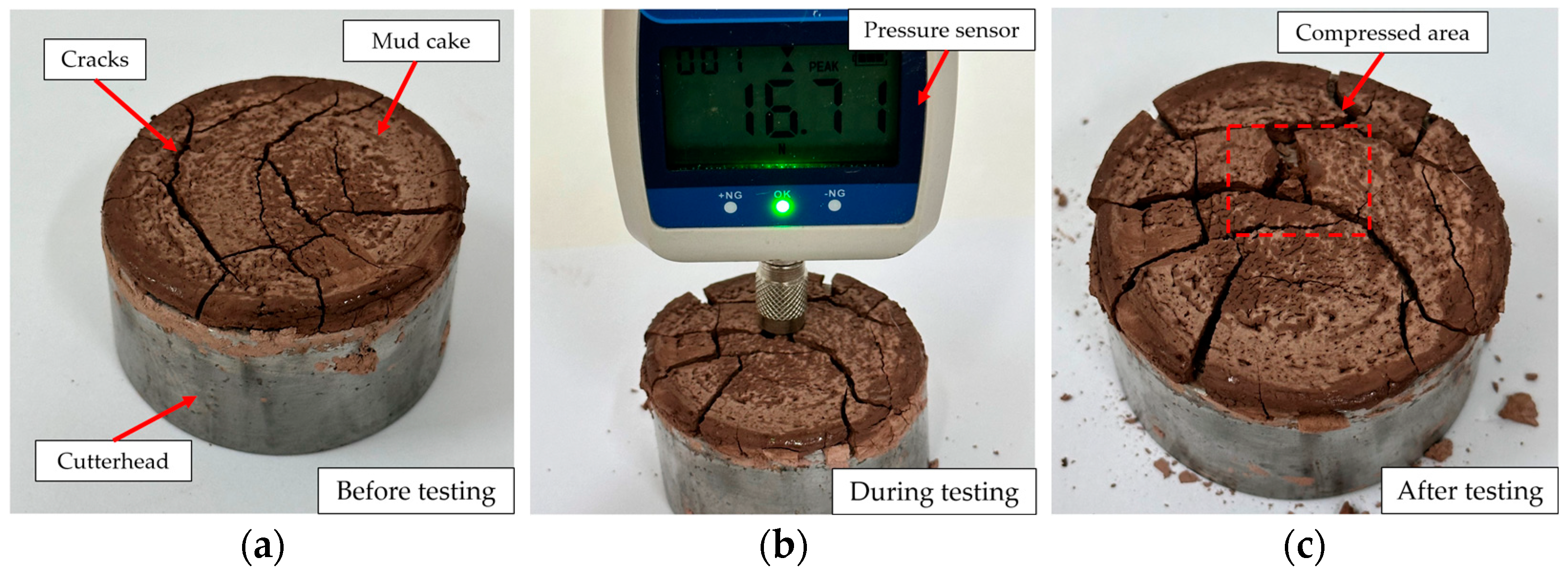
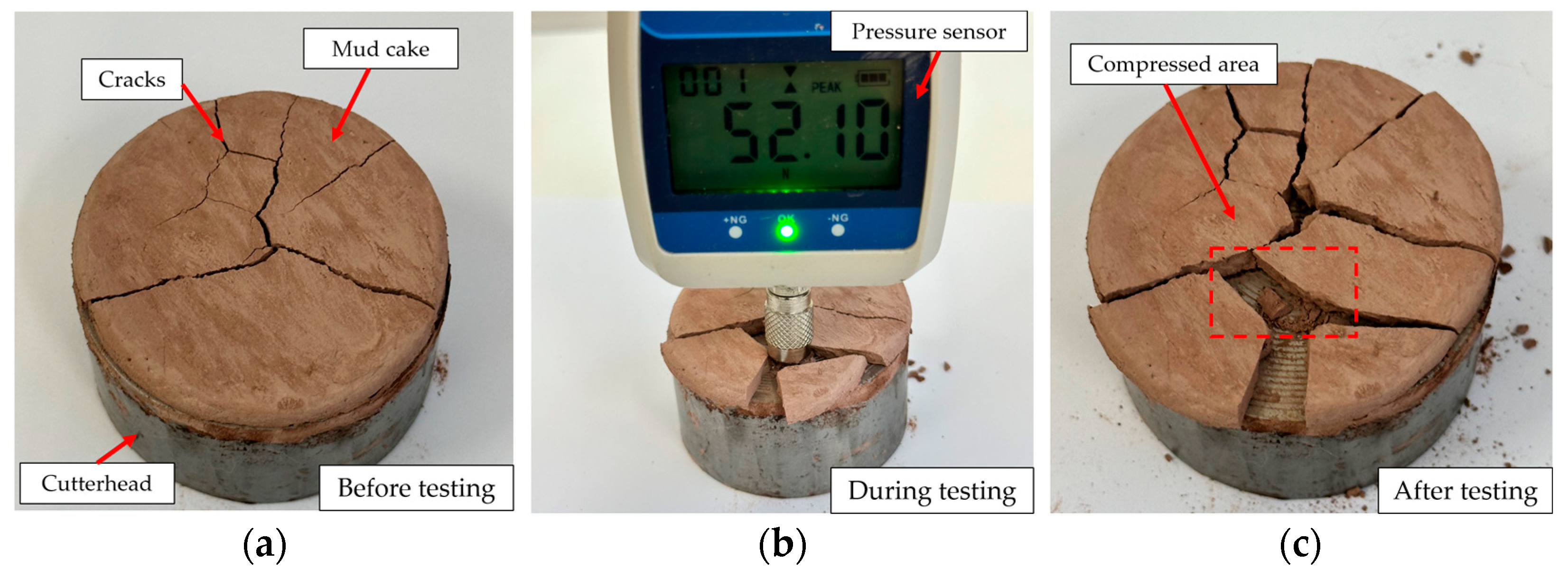
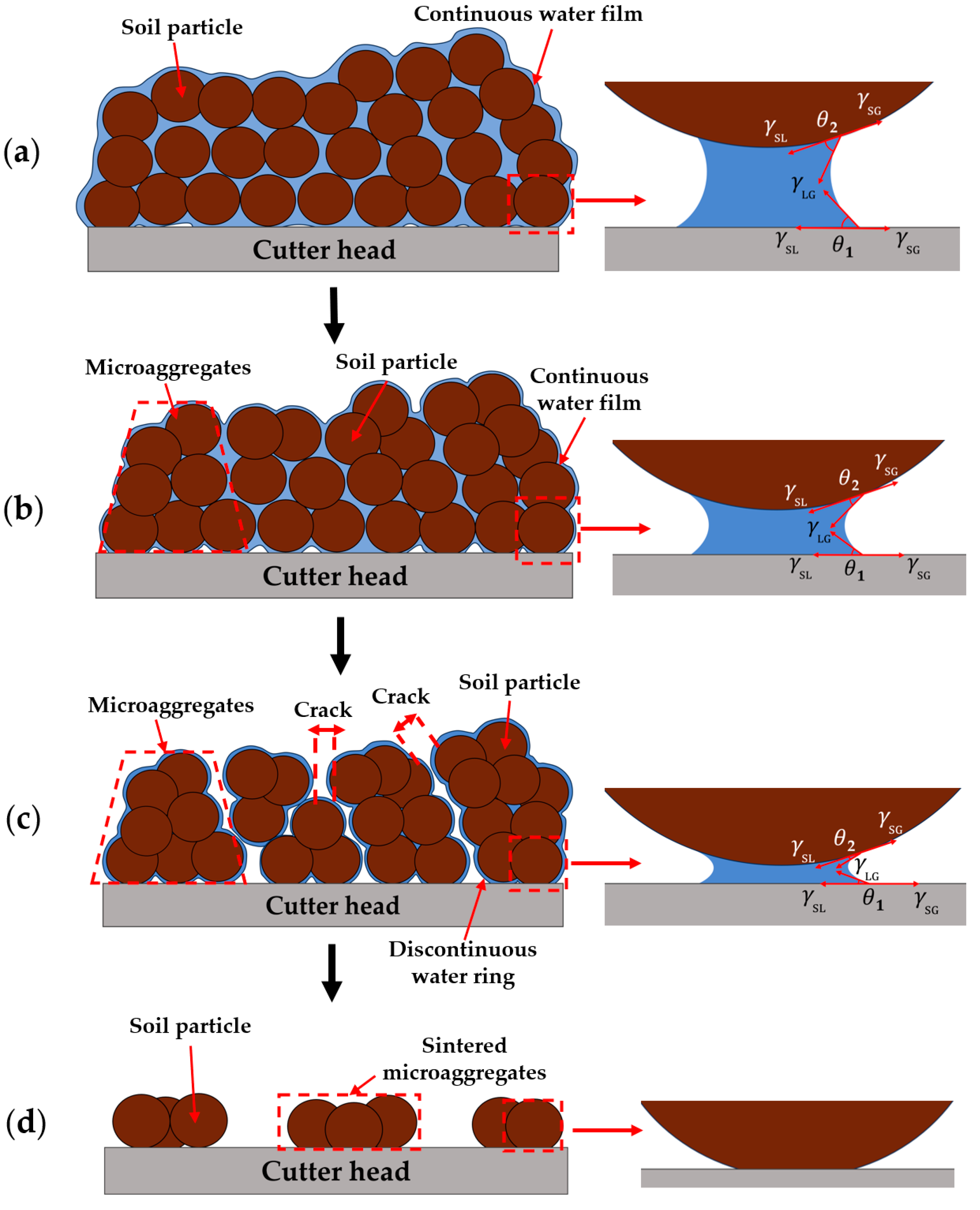
| Water Content (%) | Natural Water Content (%) | Liquid Limit (%) | Plastic Limit (%) |
|---|---|---|---|
| 15.13 | 36.5 | 42 | 23 |
| Test Sample | Temperature (°C) | Time (min) | Test Sample | Temperature (°C) | Time (min) |
|---|---|---|---|---|---|
| T25-10 | 25 | 10 | T125-10 | 125 | 10 |
| T25-20 | 25 | 20 | T125-20 | 125 | 20 |
| T25-30 | 25 | 30 | T125-30 | 125 | 30 |
| T25-40 | 25 | 40 | T125-40 | 125 | 40 |
| T25-50 * | 25 | 50 | T125-50 * | 125 | 50 |
| T50-10 | 50 | 10 | T150-10 | 150 | 10 |
| T50-20 | 50 | 20 | T150-20 | 150 | 20 |
| T50-30 | 50 | 30 | T150-30 | 150 | 30 |
| T50-40 | 50 | 40 | T150-40 | 150 | 40 |
| T50-50 * | 50 | 50 | T150-50 * | 150 | 50 |
| T75-10 | 75 | 10 | T175-10 | 175 | 10 |
| T75-20 | 75 | 20 | T175-20 | 175 | 20 |
| T75-30 | 75 | 30 | T175-30 | 175 | 30 |
| T75-40 | 75 | 40 | T175-40 | 175 | 40 |
| T75-50 * | 75 | 50 | T175-50 * | 175 | 50 |
| T100-10 | 100 | 10 | T200-10 | 200 | 10 |
| T100-20 | 100 | 20 | T200-20 | 200 | 20 |
| T100-30 | 100 | 30 | T200-30 | 200 | 30 |
| T100-40 | 100 | 40 | T200-40 | 200 | 40 |
| T100-50 * | 100 | 50 | T200-50 * | 200 | 50 |
| Test Sample | Force (N) | Percentage Increase (%) |
|---|---|---|
| T25-50 * | 6.68 | 0 |
| T50-50 * | 7.67 | 14.8 |
| T75-50 * | 8.92 | 16.3 |
| T100-50 * | 16.70 | 87.2 |
| T125-50 * | 14.69 | -12.0 |
| T150-50 * | 22.52 | 53.3 |
| T175-50 * | 31.32 | 39.1 |
| T200-50 * | 52.10 | 66.3 |
Disclaimer/Publisher’s Note: The statements, opinions and data contained in all publications are solely those of the individual author(s) and contributor(s) and not of MDPI and/or the editor(s). MDPI and/or the editor(s) disclaim responsibility for any injury to people or property resulting from any ideas, methods, instructions or products referred to in the content. |
© 2024 by the authors. Licensee MDPI, Basel, Switzerland. This article is an open access article distributed under the terms and conditions of the Creative Commons Attribution (CC BY) license (https://creativecommons.org/licenses/by/4.0/).
Share and Cite
Yan, J.; Xue, X.; Xue, K.; Gong, C.; Zhang, K. Experimental Study on the Effect of Temperature on the Characteristics of Cutterhead Mud Cake in Complex Red-Bed Geology. Coatings 2024, 14, 1071. https://doi.org/10.3390/coatings14081071
Yan J, Xue X, Xue K, Gong C, Zhang K. Experimental Study on the Effect of Temperature on the Characteristics of Cutterhead Mud Cake in Complex Red-Bed Geology. Coatings. 2024; 14(8):1071. https://doi.org/10.3390/coatings14081071
Chicago/Turabian StyleYan, Jinshuo, Xingwei Xue, Kaiwen Xue, Chaofan Gong, and Kexin Zhang. 2024. "Experimental Study on the Effect of Temperature on the Characteristics of Cutterhead Mud Cake in Complex Red-Bed Geology" Coatings 14, no. 8: 1071. https://doi.org/10.3390/coatings14081071




